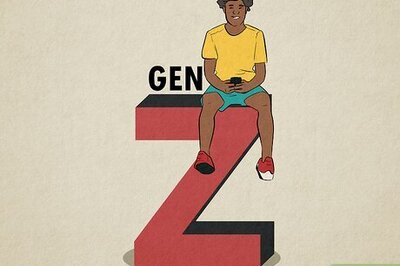
views
New Delhi: Keep work out of the health ministry, seems to be the working principle of Ayushman Bharat’s National Health Protection Mission (AB-NHPM).
Union Health Minister JP Nadda on Thursday laid out the Mission’s details after the Union Cabinet on Wednesday gave its go ahead to the insurance-based grand healthcare plan, first announced in the 2018 Union Budget.
The minister briefed the press about a national council that he would chair, with the vice chair of NITI Aayog as its vice chair, a governing board chaired by the health secretary and an implementing body, the National Health Protection Agency, headed by a CEO. This CEO, said senior health officials, would be either of the rank of a secretary or additional secretary.
The whole structure, said one official, was designed to deliberately not let AB-NHPM work come to the ministry.
The government has earmarked Rs 10,000 crore for 2018-19, added Nadda, and it will cover everything, from the 1,347 types of packages being designed for the scheme, to the IT systems set up to run it. All this will be operationalised in April, when the Centre shares its guideline, models of tenders and contracts, and packages, with the states. Systems will be tested in July and the launch depends on these field tests.
All states are so far on board, said the ministry, taking their participation in the state consultations held recently as a good sign.
States are being baited with portability. One of the officials News18 spoke to, questioned why West Bengal, which had said no NHPM, would refuse when NHPM will allow a beneficiary from Bengal to be treated in Karnataka. NHPM will also expand the number of people covered by Bengal’s existing scheme and by the RSBY, from 86 lakh families to 1.16 crore families.
These officials expect no resistance from states in giving up their pre-existing insurance and health schemes in favour of NHPM. Over time, the ministry will encourage them to shift to a trust based model of NHPM, over an insurance based one, as the former keeps decision making powers in the hands of government authorities, not insurance companies.
The whole technocratic structure will work through a QR code given to each family that can be used in any of the hospitals that join the Mission in any state. Families and their QR codes will be decided on the basis of data from the Socio Economic Caste Census (SECC). The data will be updated through the rural development ministry’s Gram Swaraj Abhiyan and shared with each gram panchayat. Families living in kutcha houses, families with no adults aged 16 to 59, families with no male adults aged 16-59 are some who will be made beneficiaries; an estimated 8.3 crore rural families and 2.33 crore urban.
Though the officials News18 spoke to rubbished rumours of the ministry being less at the helm, as compared to the NITI Aayog, there seems to be a healthy mistrust of bureaucracy and public sector systems among those steering the Mission.
NHPM will provide an insurance cover of Rs 5 lakh annually to almost 10 crore families to go to any hospital of their choice among government and empanelled private ones.
An official said, “It is the public sector that lacks accountability, not the private. I don’t know if my doctors are even reaching their clinics.”
The government isn’t banking on marquee corporate hospitals to join. These, estimated the officials, made up only 1.25 percent of all private hospitals, and the smaller ones are likely to come on board.
Private hospitals would work happily with the government in this “game of volume”. By handing over money to people, said these officials, the Mission gives them the power to choose their hospital and convinces private hospitals to join the scheme by sending patients their way in droves. Even if hospitals have to perform procedures or treat patients for amounts less than their rates, they’ll compensate by the number of patients they’ll receive through NHPM.
“We are meeting needs by empowering patients to go to hospitals,” said Dr. Dinesh Arora, Director, Ayushman Bharat. “We’ve worked with the supply side for many years pumping money into the NHM, and now we’re working with the demand side by putting money in people’s hands.”
Warring with this faith in private facilities is the acknowledged need to pump money into public structures. In the long run, admitted one official, public hospitals will keep costs in check.
The money from the scheme then, said this official, won’t come to the government, it will stay with hospitals to improve their infrastructure. It is no coincidence, the officials added, that the Cabinet approved the continuation of the National Health Mission (NHM)—which looks after the infrastructure and manpower of all public healthcare -- with an allocation of Rs. 85,217 crore the same day.
The aim, they said, is to bring public healthcare on a par with private. Dovetailing NHPM and the NHM, according to them, is the way do so.
The NHM, incidentally, had incurred the wrath of the NITI Aayog last year. Media reports indicated that the think tank was happy to do away with the programme that is the bulwark of public healthcare in India. Though this is no longer the case, the animosity for such a programme still exists.
“People are worried about NHPM’s Rs 10,000 crore going into the private sector,” said one of the officials, ruffled by questions of private sector accountability, “but no one ever asks what happened to the money that went into public healthcare. Why aren’t government hospitals that good yet?”
Another senior bureaucrat said that private hospitals will need to be monitored through the Clinical Establishments Act, and prices be kept in check through expanding the scope of the National List of Essential Medicines to cap the prices of consumables.

















Comments
0 comment